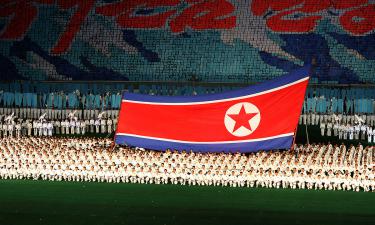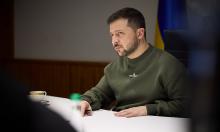50th anniversary of Russia's first nuclear power plant
At the beginning of the 20th century, few people believed that nuclear energy could be used. In 1933, Ernest Reserford wrote that people would not be able to control nuclear energy to an extent that it would be of any commercial value.
Another great scientist, Vladimir Vernadsky was more far-sighted. Long before Reserford's statement, in 1922 Vernadsky said: "The time is near when man will receive atomic energy, which will allow him to arrange his life the way he likes."
The history of the practical use of atomic energy began tragically in August 1945, when an American atom bomb exploded over Hiroshima. However, Soviet physicists were the first to use nuclear energy for peaceful purposes. The world's first nuclear power plant was commissioned on June 27, 1954, in Obninsk, a city 100 kilometers southwest of Moscow.
Scientists in the Soviet Union first drew the government's attention to a possibility of using nuclear energy to generate electricity before the war. At that time, nobody considered the military uses of nuclear power. On June 26, 1940, Moscow-based Izvestia, reporting about Soviet physicists' nuclear research, said: "it has been roughly estimated that one weight unit of uranium is capable of producing over 2 million times as much energy as can be obtained by burning the same amount of coal." In 1941, scientists calculated that the release of nuclear energy was possible in theory, but research was stopped on June 22, when Nazi Germany attacked the Soviet Union. The nuclear arms race began in 1942, the most difficult period of the war for the Soviet Union. The best physicists worked on developing an atom bomb. At that time, it was necessary to develop nuclear arms ahead of the Nazis. The danger of them winning the race was quite real. After the victory over Germany, this task unfortunately became urgent, especially after the U.S. used its atom bomb and Winston Churchill made his famous speech in Fulton, Missouri, on March 5, 1946 marking the beginning of the cold war.
However, in the first months after the war, in November 1945, the decision was made to resume the peaceful use of nuclear energy. By that time in the Soviet Union had developed industries to produce the A-bomb. Later they could switch to the peaceful uses of nuclear energy. The work to build a nuclear power plant proceeded as rapidly as the work to develop nuclear arms. The difficulties in the first postwar years were so big that, one day, the research institute in Obninsk had to decide whether to endure the difficulties or ask to postpone the construction of a power plant. The decision to tolerate the difficulties and not to slow down work was unanimous. The task of using nuclear power for peaceful purposes - an over used phrase - inspired people. The first Soviet atom bomb was tested on August 29, 1949. And in less than five years, the world's first nuclear power station was put into operation.
The nuclear reactor at Obninsk nuclear power station worked for 48 years and was shut down two years ago for economic reasons. The fact that nothing went wrong with the reactor during all those years is a testament to its safety. Over the last 50 years, 430 nuclear power plants were built in the world. They account for almost 20% of electricity produced in the world.
Power generated by nuclear power plants was especially important for Russia, especially because of its climatic conditions, and therefore it developed very rapidly. A target was even set at that time to abandon hydrocarbon energy sources within 50 years. Burning natural gas, which was seen as a valuable raw material for chemical industry, was considered inexpedient. During the last Soviet five-year plan (1981-1985) the capacities at nuclear power plants totaled 14.6 million kilowatts.
Opposition to nuclear power in the country and in the rest of the world mounted after the 1986 accident at theChernobyl nuclear power plant, where the human factor was decisive in the tragedy. Equipment, if used correctly, could not have caused such a disaster.
In the past few years confidence in nuclear power engineering has been restored in Russia and elsewhere in the world. The Chernobyl syndrome is gradually being overcome. In the opinion of Academician Alexander Rumyantsev, a leader in this sector of Russia's economy, "we are on the threshold of a new period in history" in the development of nuclear power engineering. "The long-term technological policy in this industry provides for a gradual transition to new nuclear power technology that uses fast reactors instead of thermal reactors," Rumyantsev said at the 47th session of the IAEA General Conference.
Fast reactors, i.e., reactors operating on fast neutrons, apart from producing thermal energy, may be used to produce nuclear fuel. While uranium-235, which is in short supply today and can only be obtained by special methods, is burnt in usual reactors; isotope 238, which is found in natural uranium, is used in fast reactors. Moreover, during the reactor's work the "ineffective" uranium-238 turns into plutonium 239. Thus, the use of one kind of fuel creates another fuel, as if augmenting its natural resources. Calculations have shown that in this case, the amount of nuclear fuel that can be used to generate electricity at nuclear power plants, which have ten times greater capacity than current power plants, will be enough for thousands of years.
"The large-scale nuclear power engineering of the future should be based on reactors operating on fast neutrons. It is a logical conclusion that has been made after the industry has operated for 50 years," Rumyantsev said.
In Russia the BN-600 reactor, in which the entire national experience of developing fast neutron reactors is concentrated, has been operating effectively for 25 years. It still is unparalleled in the world.
The generating unit with a fourth generation BN-800 fast-neutron nuclear reactor is to be put into service at the Beloyarsk nuclear power plant in the Urals late in 2009 or in the beginning of 2010, Rumyantsev announced.
According to the energy strategy adopted in Russia, the amount of nuclear energy in the country will increase from 130 billion kilowatt-hours in 2000 to 195 billion kilowatt-hours in 2010 and to 300 billion kilowatt-hours in 2020.
Subscribe to Pravda.Ru Telegram channel, Facebook, RSS!





